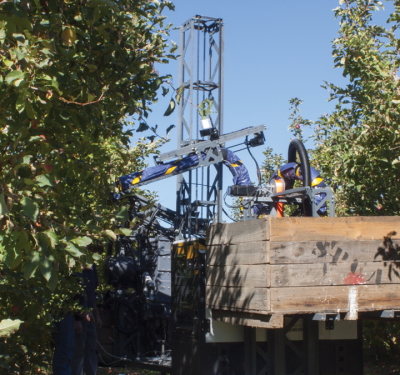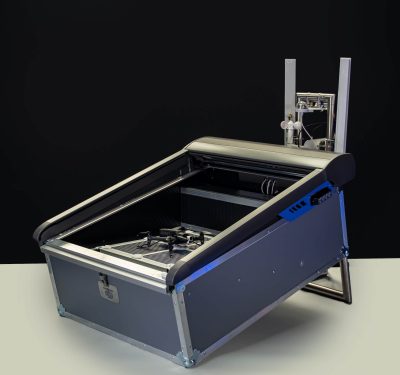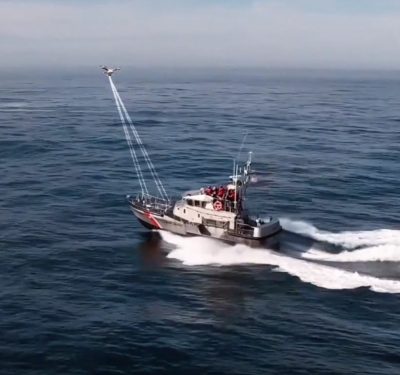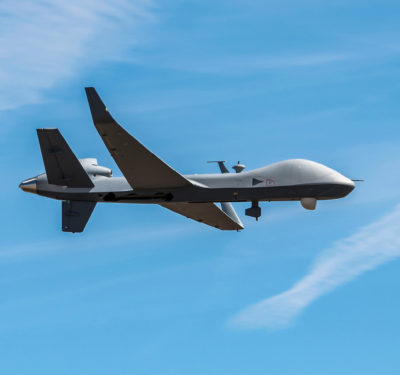
Just when ARE we going to get beyond line of sight rules (BLOS) from the FAA? We’ve been talking about flying outta sight, or BLOS, for the past several articles. I hope I’ve convinced you that the commercial drone industry won’t take off until the FAA lets us fly BLOS and that BLOS operations are both technically and politically feasible. I think I’ve been persuasive in my argument that industry can’t make money with drones that can only fly a mile or so from their remote pilots under current FAA rules. The one thing I haven’t talked about is when.
The timing for BLOS rules is a tough issue. As a retired intel officer, I know the first thing they teach at intel school is to ask two key questions when confronted with a tough political issue – “Who will gain from the issue and How committed are they to their cause?” Once you answer these questions, it’s fairly easy to “follow the money” and predict the outcome. So who will gain from flying outta sight?
I break the UAS industry into two big groups – the traditional aerospace companies (Northrup, Boeing, Lockheed, Textron, General Atomics, AeroVironment Israeli Aircraft Industries (IAI), etc.) and the ‘Silicon Valley crowd’ (Amazon, Google, Precision Hawk, 3 DR and DJI). The motivation – and the commitment to the cause – is different between these two groups.
The aerospace companies are interested in flying BLOS because they know they have the expertise to dominate the BLOS market, but paradoxically are not pressuring the FAA to develop BLOS rules. Aside from perhaps AeroVironment (and maybe IAI), the aerospace companies aren’t very interested in the within visual line of sight (VLOS) drones allowed by Part 107. The don’t have expertise in small UAS and are willing to leave that segment to the Silicon Valley crowd. Oddly enough, the aerospace companies know better than anyone how to fly drones BLOS. IAI has been doing it since the 80’s. Northrup’s gigantic, autonomous, transoceanic capable Global Hawk became the safest weapons system in Air Combat Command several months ago. General Atomics pioneered Air Force remote split ops that allows remote pilots, intelligence analysts and the drone they’re working to be thousands of miles from each other.
If the aerospace companies have the resources to help the FAA make BLOS a reality and have been doing it with military drones for decades, why aren’t they leading the BLOS fight? The problem is “following the money” leads to the military market. They have the military market locked up and can afford to wait until the FAA gets its act together on BLOS. Each of the big aerospace companies analyzed the commercial BLOS market and came to the same conclusion; the FAA is years away from BLOS rules and it’s not time to invest yet. That’s not to say they don’t have a strategy for BLOS. Northrup Grumman knows no company can match them in aviation grade autonomy. They’ve already taught drones to land on carriers (Navy UCAV program), refuel other drones, fly across oceans, fly over hurricanes (Global Hawk) and land on destroyers (Fire Scout). General Atomics is wiping the floor with Al Qaida from a hemisphere away. The big guys know they’ll just move in and dominate the market when the time is right. Until then, their engineers are plenty busy with military drones.
The Silicon Valley crowd is passionate about small UAS and spent a tremendous amount of time lobbying the current small UAS rules that only allows VLOS drone flight. You’d think they’d be just as passionate about lobbying for BLOS operations, but they aren’t putting up the same fight they did for the current VLOS-only rules. Why?
The Silicon Valley crowd knows they’re venturing outside their area of expertise in BLOS drone operations. BLOS means detect and avoid technology that the aerospace companies (specifically Northrup and GA) are perfecting. It means building UAV’s that can pass real airworthiness certification. It’s tough to beat Boeing, Lockheed, Northrup, GA or Textron when it comes to FAA airworthiness. It means advanced data links, a market L3 dominates. Above all, it means building drones bigger than the 55 lbs allowed by Part 107. How could Silicon Valley compete against a commercial variant of GA’s MQ-1 Predator? Insitu’s Scan Eagle or Integrator? Elbit’s Hermes 450? Northrup’s Fire Scout or Global Hawk?
Keep in mind, the Silicon Valley crowd also doesn’t have the ready-made drone research piggy bank that the aerospace companies do with their military drone programs. Every dollar Northrup gets from the Air Force for UAS autonomy programs is a dollar they can use later for a commercial equivalent. That’s not the case for Amazon. They constantly pull research money from elsewhere in the company to fund Prime Air because Uncle Sam’s investment isn’t there for their drone delivery services. Lack of DoD dollars in Silicon Valley companies impacts their ability to sustain BLOS drone research. There’s a big difference between Precision Hawk, who keeps their UAS engineers employed with IRAD and investment funds and Textron who keeps their engineers employed courtesy of the US Army.
There are, however, ardent BLOS advocates in both camps. Amazon Prime Air actively supports BLOS, but they’re more interested in getting Part 107 waivers for their own operations than general rules for everyone. It cuts into their profit margins when W
Walmart can deliver outta sight just like they do. The air cargo industry, led by Fedex, is also a big BLOS believer and they have the market share to bring in at least Boeing and Airbus. However, they have a realistic 10-15-year time line for unmanned air cargo aircraft.
The fact that neither the aerospace companies or the Silicon Valley crowd see BLOS as a crushing “must do” explains most of my hesitancy on BLOS rules. My other concern is losing momentum due to the very real prospect of FAA privatization. Senior FAA management spent a lot of time last year either defending the organization against privatization or working up plans in case privatization took hold. The Senate intervened against privatization last year, but Trump’s election this year changes everything. Expect another round of privatization battles this year and another year’s loss of momentum while large portions of the FAA are again preoccupied with privatization. It will be tough to have rational conversations with FAA/AT (Air Traffic) about theoretical increases in controller workload from BLOS drones when they’re uncertain whether their controllers will be working for them a year from now. If privatization DOES occur, we’ll lose even more momentum while the FAA implements it. We’ll then get into familiar BLOS discussions with whatever companies win the privatization battle. And their biggest customers will be the airlines, some of the least drone friendly companies on the planet.
And let’s not forget Trump’s promise to “cut two regulations for every new one implemented.” I’ve got three degrees in political science and I have NO clue how a government as large as ours will implement a policy like that. I DO know that it will slow up BLOS rules while the feds figure it out.
Lack of commitment from industry and confusion caused by privatization are why I think it will be a minimum of three years to five years before we see BLOS rules from the FAA. Aviation rulemaking normally takes three years, hence the lower end of my estimate. The FAA is currently moving much faster with their Micro UAS rules, but that’s with zealous industry pressure. For the reasons outlined above, I don’t see that same pressure for BLOS. The high end of my estimate comes from FAA privatization confusion and that estimate holds only if the new administration does not privatize the FAA and the government figures out how to implement his regulation reduction policy quickly. I don’t know enough about FAA privatization plans to comment on how a privatized air traffic organization would handle BLOS UAS. I do know how to follow the money for privatized air traffic and that trail leads to the airlines. And that ain’t good for outta sight drones!






